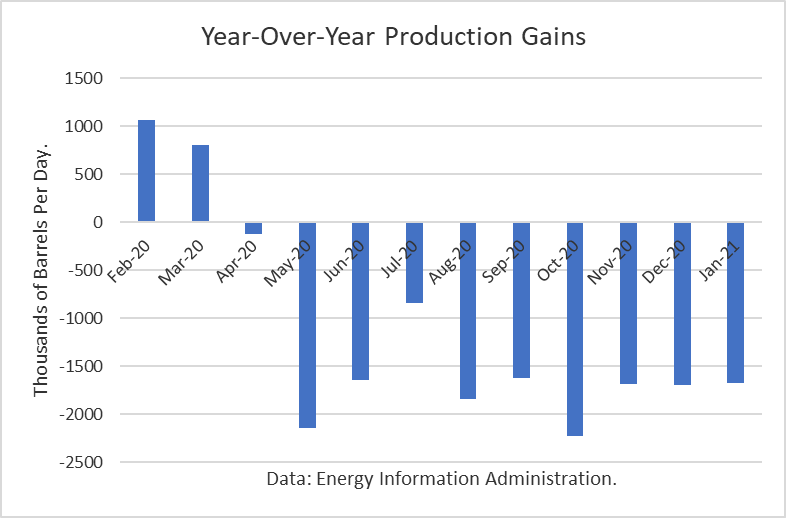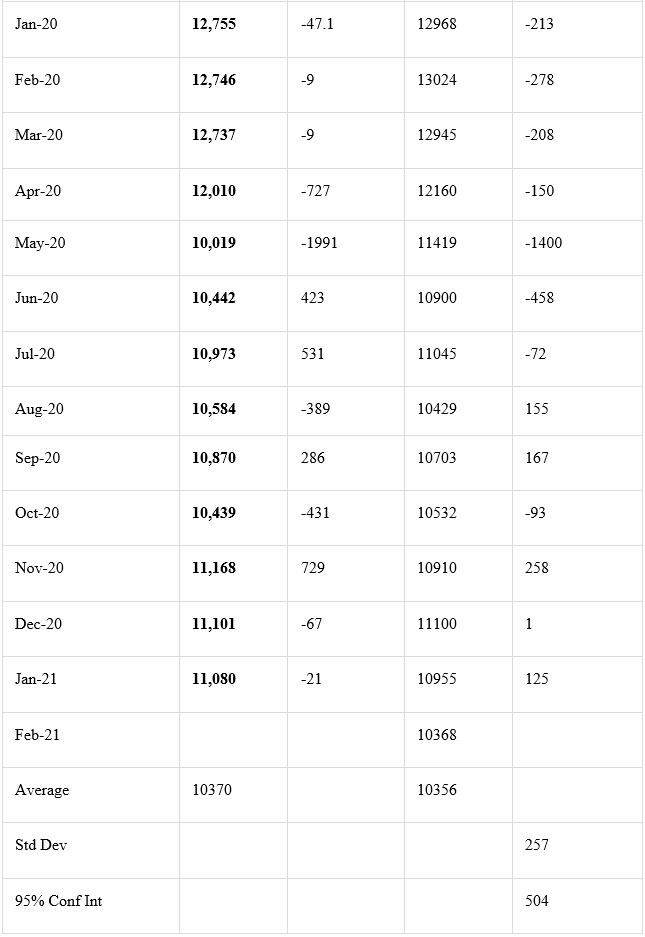The Energy Information Administration reported that January crude oil production fell by 21,000 barrels per day, averaging 11.080 mmbd. This follows a dip of 67,000 b/d in December.

Drops in crude production were experienced in North Dakota (45,000 b/d), Oklahoma (11,000), and in the US Gulf Coast (11,000). But output in Texas rose by 25,000 b/d.
Given the huge reduction in May, production dropped by 1.675 mmb/d over the past 12 months. This number only includes crude oil.

The EIA-914 Petroleum Supply Monthly (PSM) figure was 125,000 barrels per day higher than the weekly data reported by EIA in the Weekly Petroleum Supply Report (WPSR).

The 914 figure was about 140,000 higher than the 10.940 mmbd estimate for that month in the March Short-Term Outlook. This difference is enough to trigger a “rebenchmarking” to EIA’s model in future production levels at this time.
The EIA is projecting that 2021 crude production will exit the year at 11.54 mmbd. And for 2022, it projects an exit at 12.50 mmbd.

Drilling rigs have been steadily rising and the May WTI contract has rebounded to just below $60/bbl.

Conclusions
The unprecedented oil price collapse of 2020 has been totally erased and U.S. crude production has responded. It appears that EIA projections for low growth in 2021 and 2022 may be too pessimistic.
Check back to see my next post!
Best,
Robert Boslego
INO.com Contributor - Energies
Disclosure: This contributor does not own any stocks mentioned in this article. This article is the opinion of the contributor themselves. The above is a matter of opinion provided for general information purposes only and is not intended as investment advice. This contributor is not receiving compensation (other than from INO.com) for their opinion.
